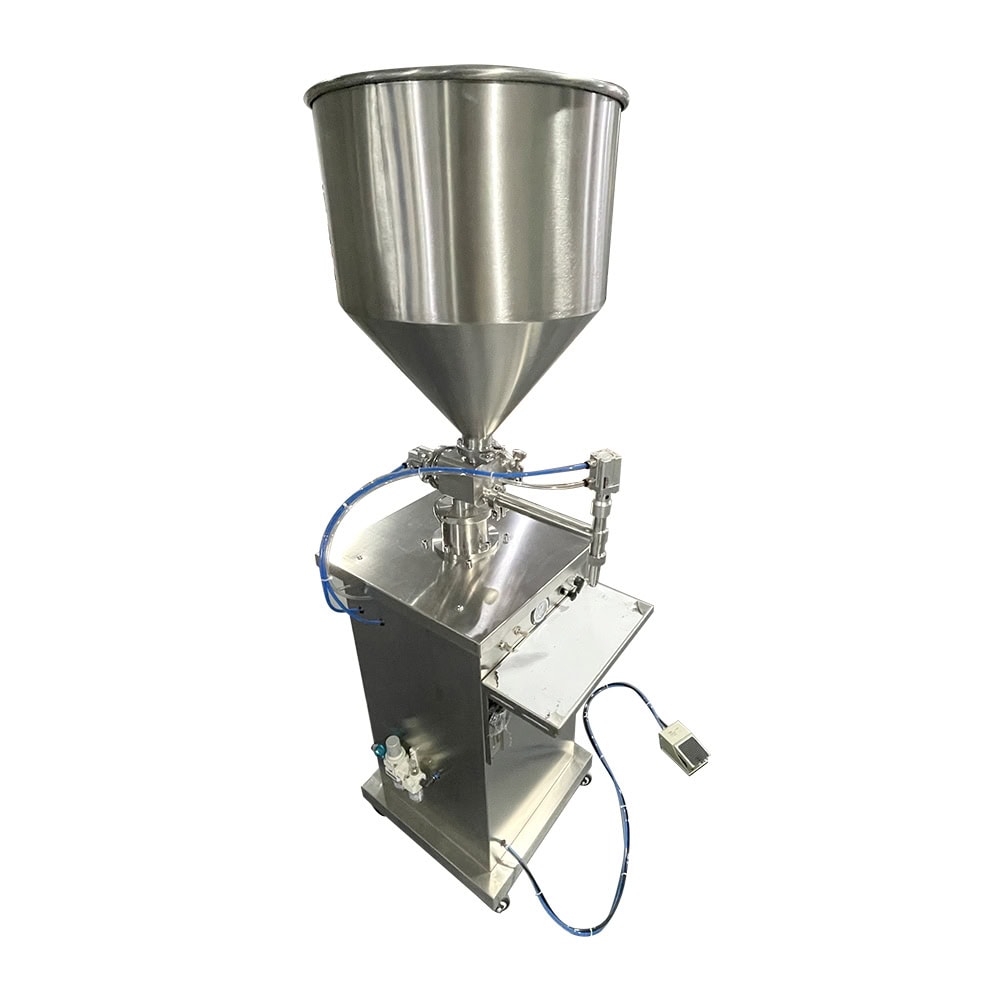If you don’t maintain your liquid filling machine, you will have downtime and lower productivity. That means you’ll have expensive repairs and delays in production. You need a maintenance schedule to keep your machine running.
To better maintain a liquid filling machine, ensure regular cleaning, lubrication, calibration, and inspection of essential parts. This helps prevent breakdowns, enhances precision, and extends equipment life.
If you have a maintenance schedule, your liquid filling machine will work.
Regular Cleaning
One of the most important things to do to maintain a liquid filling machine is to keep it clean. You need to clean the residue off the filling nozzles, the conveyors, the tanks and any other place where the product might build up. That residue can cause the machine to jam, contaminate the product, or not work properly, especially if you’re dealing with something that can harden or clog over time.
To avoid these problems, set up a cleaning schedule based on your production volume. Clean the parts immediately after you use them so the residue doesn’t dry. Use cleaning agents that are compatible with the type of product you’re using. Make sure to rinse everything out so you don’t contaminate your product with cleaning solution.
Lubrication
Lubrication is essential to reducing friction between moving parts in the machine. Regular lubrication of critical components such as bearings, gears, and other mechanical joints helps prevent wear and tear, thus extending the life of the machine. Friction between parts can lead to overheating and failure of key components, which may cause sudden breakdowns in production.
Establish a routine for lubrication, using the correct type of lubricant as recommended by the manufacturer. Over-lubricating can be just as harmful as under-lubricating, so follow the guidelines precisely.
Calibration of Filling Volume
Ensuring your liquid filling machine remains accurate is critical to maintaining product consistency and quality. Calibration is particularly important because, over time, machines can lose accuracy due to wear and tear or changes in environmental conditions.
Perform regular calibration checks to adjust the filling volume according to your product’s requirements. This not only ensures precision but also avoids wastage of products due to overfilling or underfilling. Some machines have built-in calibration features, while others may require manual adjustment.
Inspect for Wear and Tear
Regular inspection of wear-prone parts like seals, gaskets, and valves is crucial to preventing leaks or breakdowns. These components are subject to constant stress and can degrade over time. Worn-out parts can lead to inefficient operation, causing the machine to slow down or stop altogether.
By identifying and replacing worn parts early, you can prevent more serious problems from developing. Create a checklist to regularly inspect key parts and replace them as needed.
Check for Air and Fluid Leaks
Air and fluid leaks are common issues that can impact the performance of a liquid filling machine. Leaks in pneumatic systems can reduce the pressure needed for proper operation, leading to inconsistent filling or machine malfunctions.
Check all hoses, pipes, and connections for signs of leaks and wear. Ensure that seals and gaskets are in good condition and that all connections are properly tightened. Addressing leaks promptly will keep your machine operating efficiently.
Electrical Components Inspection
Electrical components, such as sensors, wiring, and control systems, are critical to the smooth operation of a liquid filling machine. Faulty wiring or malfunctioning sensors can cause operational failures, resulting in costly downtime.
Perform routine inspections of electrical parts to ensure there are no loose connections or faulty sensors. Make sure that all wiring is properly insulated, and replace any damaged cables or components immediately to avoid electrical hazards.
Regularly Update the Software
Many modern liquid filling machines operate with the help of sophisticated software that controls their functionality. Keeping this software up to date is vital to ensure that the machine operates at peak efficiency. Software updates often include important bug fixes, security patches, and new features that can enhance performance.
Check for updates from the manufacturer regularly and ensure that only qualified personnel handle software upgrades to prevent accidental configuration errors.
Replace Filters and Nozzles
Filters and nozzles play a key role in ensuring that the liquid flows smoothly through the machine without obstruction. Over time, they can become clogged, especially when working with thicker or particulate-heavy liquids.
Regularly replace or clean filters and nozzles to ensure the machine continues to operate without hiccups. Keeping these components clean will improve the quality of your product and prevent production delays.
Follow Manufacturer’s Maintenance Schedule
The manufacturer provides a detailed maintenance schedule for a reason. Following this schedule ensures that all parts of the machine receive proper attention at the correct intervals. This typically includes tasks such as part replacements, software updates, and more thorough cleanings.
By sticking to the recommended maintenance schedule, you can avoid unnecessary wear and tear, which helps prolong the machine’s lifespan and reduces the likelihood of costly repairs.
Train Operators on Proper Use
A well-trained operator can make a significant difference in the longevity and efficiency of a liquid filling machine. Improper use of the machine is one of the leading causes of breakdowns and malfunctions. Ensure that all operators are adequately trained not only in how to use the machine but also in its maintenance procedures.
Investing in proper training reduces the risk of operational errors and ensures that maintenance tasks are carried out correctly and on schedule.
Conclusion
By maintaining your liquid filling machine with regular cleaning, inspections, and part replacements, you ensure longevity and efficiency, preventing costly downtime.










